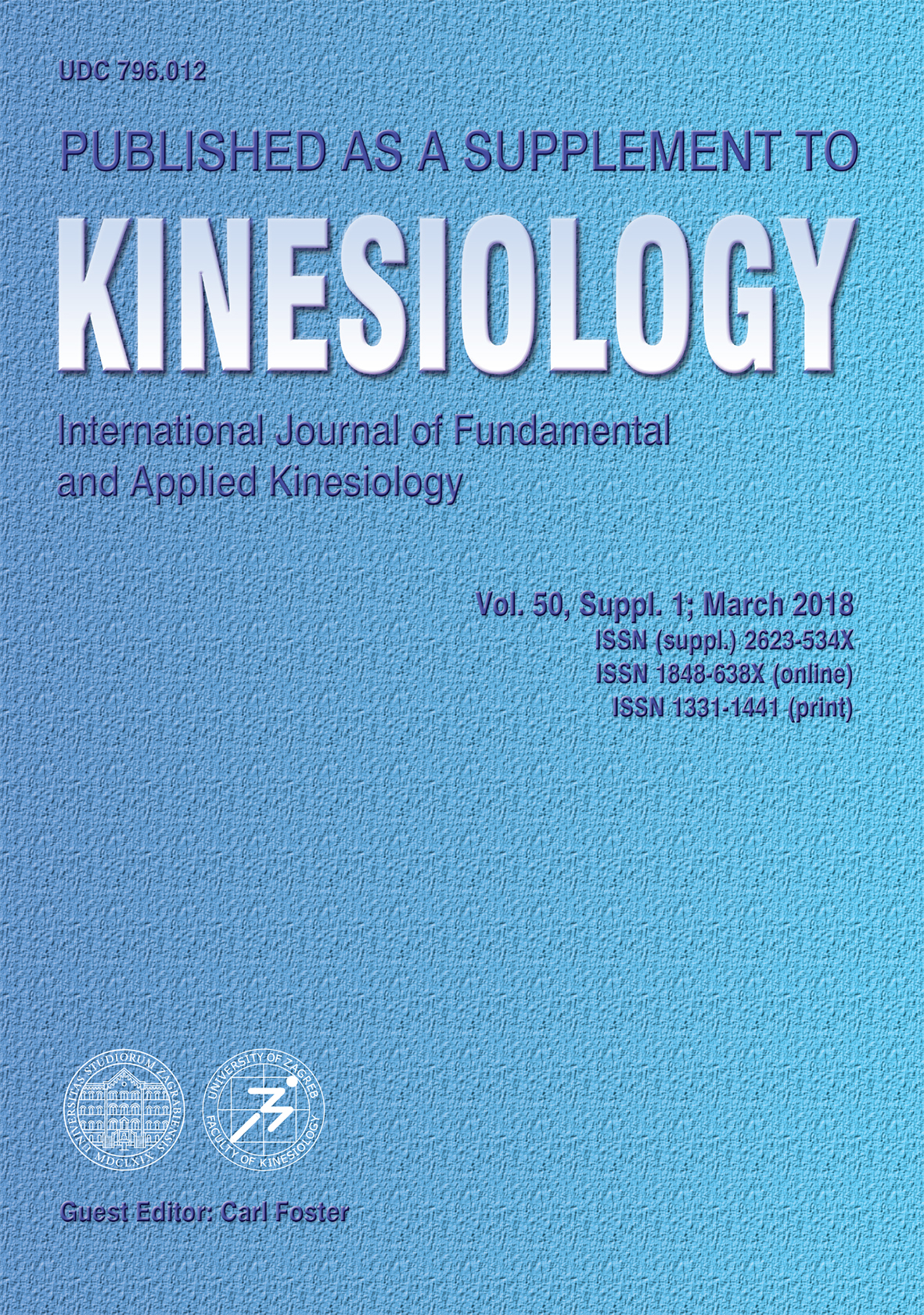EFFECTS OF HIGH-INTENSITY TRAINING WITH ONE VERSUS THREE CHANGES OF DIRECTION ON YOUTH FEMALE BASKETBALL PLAYERS’ PERFORMANCE
Abstract
To compare the effects of high-intensity interval training (HIT) with one versus three changes of direction (COD) on young (age, 17.2±1.1 years) female basketball players’ performance, six weeks of regular basketball training (control period) was followed by six weeks of high-intensity training added to regular training , two times per week, with a random allocation of athletes to either HIT with one (HIT-COD1; n=6) or three COD (HIT-COD3; n=6). Before and after the control and HIT-COD training periods athletes performed repeated-sprint ability test (RSA), modified agility T-test (MAT), V-cut, triple standing dominant (TS-D) and nondominant (TS-ND) jump, TS-D and TS-ND with COD tests, and 30-15 Intermittent Fitness Test (30-15IFT). With the exception of a substantial improvement in V-cut in both groups, no substantial changes occurred during the control period. Both HIT-COD training programs improved V-cut, although only HIT-COD3 substantially improved RSA mean time (RSAm), MAT and the final speed reached in 30-15IFT (VIFT). The between-group comparison revealed greater improvements in RSAm and VIFT in HIT-COD3 than in HITCOD1. In conclusion, supplementation of basketball training with HIT-COD drills adds improvements to young female basketball player’s performance, especially when 3 COD are incorporated into HIT.
Key words: team sport, agility, fitness, women, maturation, explosive strength
Downloads
How to Cite
Issue
Section
License
Copyright (c) 2018 Kinesiology

This work is licensed under a Creative Commons Attribution-NonCommercial 4.0 International License.
At Faculty of Kinesiology we recognize that access to quality research is vital to the scientific community and beyond. Kinesiology is non-profit journal and all costs of publishing and peer review process are covered by the publisher itself or other funding sources like Ministry of Science and Education of the Republic of Croatia. Full text papers are also available free of charge at http://hrcak.srce.hr/kineziologija. There are no restrictions on self archiving of any form of paper (preprint, postprint and publisher's version).
Articles are distributed under the terms of the CC BY - NC 4.0
Kinesiology does not charge any fees to authors to submit or publish articles in our journal.


